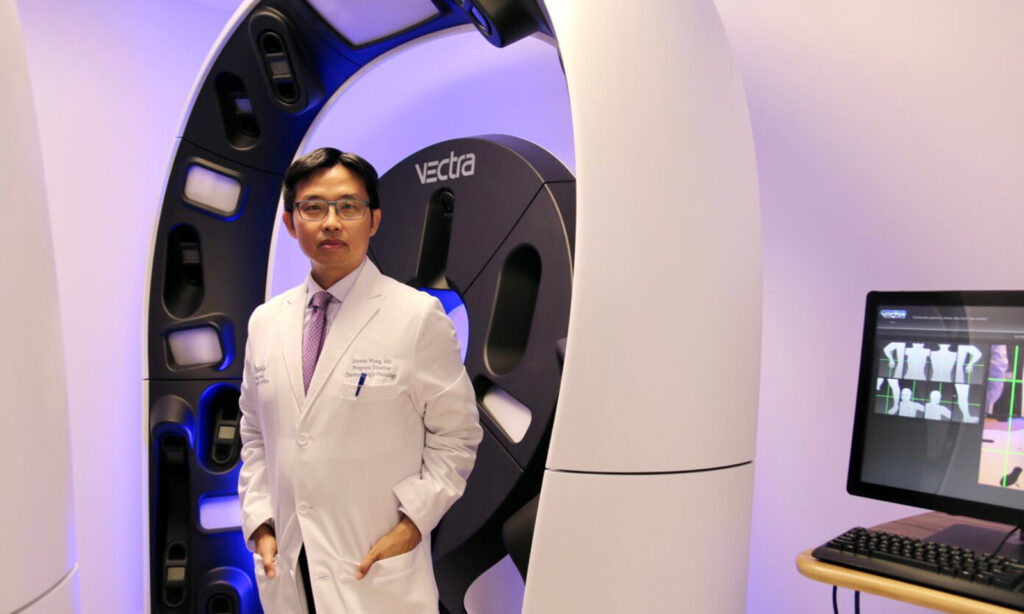Every year in the United States, doctors diagnose roughly 4 million cases of skin cancer. Until recently, every one of those diagnoses required a biopsy, resulting in discomfort, scarring and uncertainty while awaiting results. Revolutionary technology, now available for the first time on the West Coast, changes all that.
Hoag recently introduced a 3D imaging machine that uses 92 cameras to produce an image of the entire body’s skin surface in under one second.
With resolution detailed enough for doctors to detect even early-stage cancers from tiny abnormalities, the Vectra WB360 creates a 3D avatar model of the body.
“The machine also has various measurement functions that calculate lesion size, dimension and color,” says Dr. Steven Wang, medical director of dermatologic oncology at Hoag Family Cancer Institute. This means rapid, accurate and early detection. It also means no painful incisions and no unsightly scars. Dr. Wang likens it to undergoing a quick TSA screening at the airport.
Tracking changes to the skin
Cancer is a dynamic disease. If a lesion is cancerous, it will change. Vectra allows doctors to track small deviations over time. “When patients come back, dermatologists can look at the photos, look at the patient, and do a comparison to see what’s changed,” Dr. Wang says.
This tracking greatly reduces the number of lesions that require a biopsy, an invasive procedure.
But Vectra isn’t for everyone. Hoag turns away nearly as many patients as it accepts. “This is helpful technology for people with a history of skin cancer or a family history of melanoma,” Dr. Wang says. “And for people who have at least 40 to 50 lesions or abnormal moles.” Fewer lesions mean dermatologists can track moles without the need for this high-tech mapping device, which still requires a skilled physician’s eye, although improvements in artificial intelligence are gaining ground.
It’s also not covered by insurance, costing $595. “We only recommend this to people who will benefit from it,” Dr. Wang says.
Revolutionary technology
During his 17 years at Sloan Kettering Cancer Center in New Jersey, Dr. Wang helped develop this technology alongside its manufacturer, Canfield Scientific.
When Hoag recruited him in 2022, Dr. Wang proposed it purchase the equipment as incidences of skin cancer, which often appear decades after sun exposure, are on the rise in Southern California. Sunscreen wasn’t ubiquitous in the 1980s and ’90s, Dr. Wang reports, and that’s catching up with people today. And not just among fair-skinned Caucasians. Dr. Wang sees skin cancer cases in Asians, Latinos and Middle Easterners.
Funding for the $400,000 equipment was provided by Hoag Innovators, a group of philanthropists, entrepreneurs and community leaders committed to bringing leading-edge technology to the hospital.
“Vectra is the first of its kind,” Dr. Wang says. “It’s revolutionized the way we detect skin cancer.”









